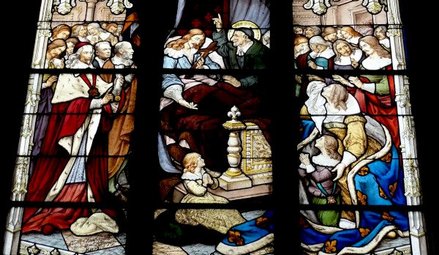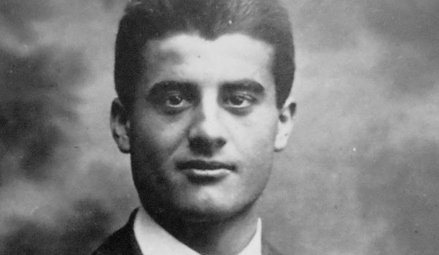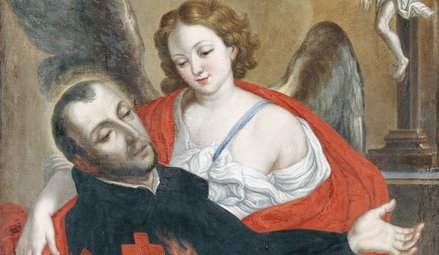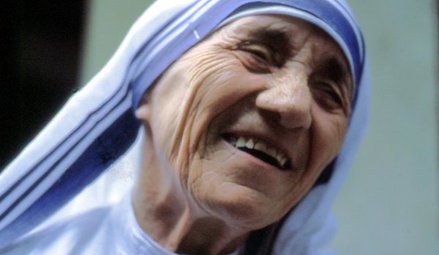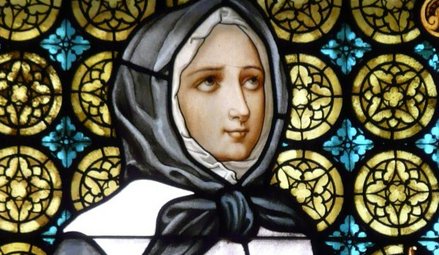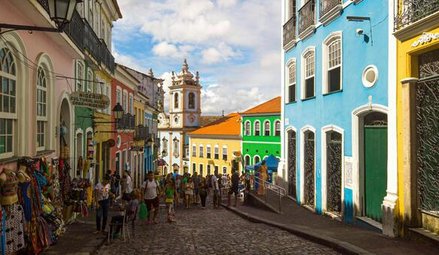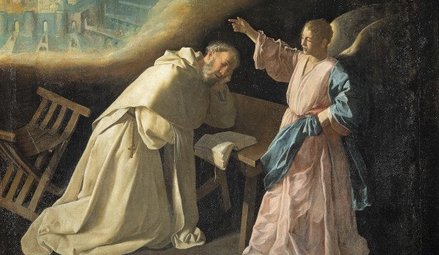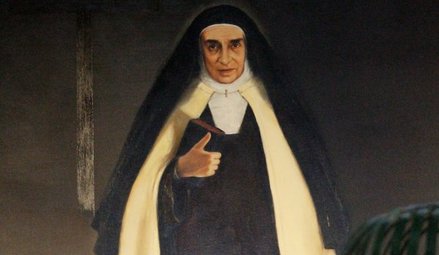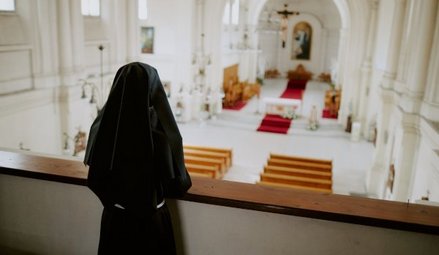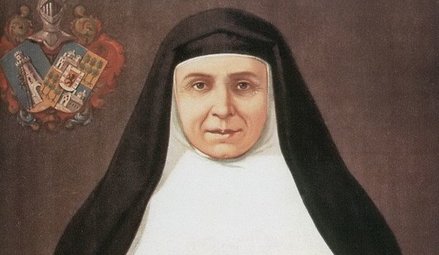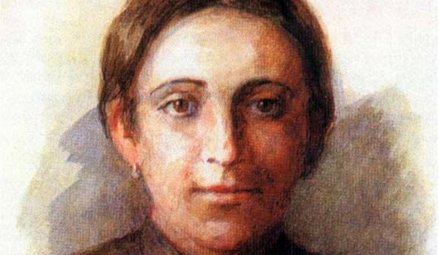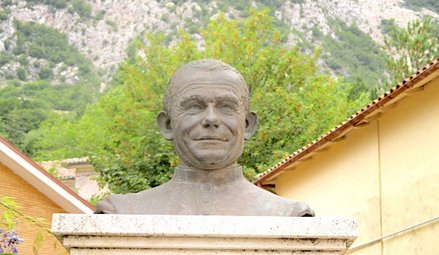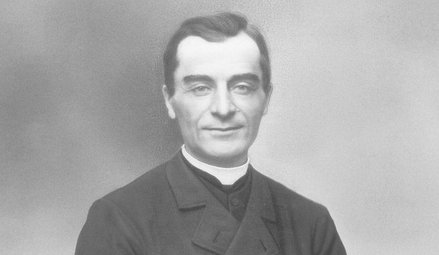- By theme
- Jesus
- The many proofs of Christ’s resurrection
- Saint Thomas Aquinas: God gave all the divine proofs we needed to believe
- The surpassing power of Christ's word
- Lewis’s trilemma: a proof of Jesus’s divinity
- God saves: the power of the holy name of Jesus
- Jesus spoke and acted as God's equal
- Jesus' divinity is actually implied in the Koran
- Jesus came at the perfect time of history
- Rabbinical sources testify to Jesus' miracles
- Mary
- The Church
- The Bible
- The authors of the Gospels were either eyewitnesses or close contacts of those eyewitnesses
- Onomastics support the historical reliability of the Gospels
- The New Testament was not altered
- The New Testament is the best-attested manuscript of Antiquity
- The Gospels were written too early after the facts to be legends
- Archaeological finds confirm the reliability of the New Testament
- The criterion of embarrassment proves that the Gospels tell the truth
- The dissimilarity criterion strengthens the case for the historical reliability of the Gospels
- 84 details in Acts verified by historical and archaeological sources
- The unique prophecies that announced the Messiah
- The time of the coming of the Messiah was accurately prophesied
- The prophet Isaiah's ultra accurate description of the Messiah's sufferings
- Daniel's "Son of Man" is a portrait of Christ
- The Apostles
- The martyrs
- The protomartyr Saint Stephen (d. 31)
- Polycarp, bishop of Smyrna, disciple of John and martyr (d. 155)
- Saint Blandina and the Martyrs of Lyon: the fortitude of faith (177 AD)
- Saint Agatha stops a volcano from destroying the city of Catania (d. 251)
- Saint Lucy of Syracuse, virgin and martyr for Christ (d. 304)
- Thomas More: “The king’s good servant, but God’s first”
- The martyrdom of Paul Miki and his companions (d. 1597)
- The martyrs of Angers and Avrillé (1794)
- The Martyrs of Compiègne (1794)
- The Vietnamese martyrs Father Andrew Dung-Lac and his 116 companions (17th-19th centuries)
- He braved torture to atone for his apostasy (d. 1818)
- Blaise Marmoiton: the epic journey of a missionary to New Caledonia (d. 1847)
- José Luis Sanchez del Rio, martyred at age 14 for Christ the King (d. 1928)
- Saint Maximilian Kolbe, Knight of the Immaculate (d. 1941)
- The monks
- Saint Anthony of the Desert, a father of monasticism (d. 356)
- Saint Benedict, father of Western monasticism (d. 550)
- Saint Bruno the Carthusian (d.1101): the miracle of a hidden life
- Blessed Angelo Agostini Mazzinghi: the Carmelite with flowers pouring from his mouth (d. 1438)
- Monk Abel of Valaam's accurate prophecies about Russia (d. 1841)
- The more than 33,000 miracles of Saint Charbel Maklouf (d. 1898)
- Saint Pio of Pietrelcina (d. 1968): How God worked wonders through "a poor brother who prays"
- The surprising death of Father Emmanuel de Floris (d. 1992)
- The prophecies of Saint Paisios of Mount Athos (d. 1994)
- The saints
- Saints Anne and Joachim, parents of the Virgin Mary (19 BC)
- Saint Nazarius, apostle and martyr (d. 68 or 70)
- Ignatius of Antioch: successor of the apostles and witness to the Gospel (d. 117)
- Saint Gregory the Miracle-Worker (d. 270)
- Saint Martin of Tours: patron saint of France, father of monasticism in Gaul, and the first great leader of Western monasticism (d. 397)
- Saint Lupus, the bishop who saved his city from the Huns (d. 623)
- Saint Dominic of Guzman (d.1221): an athlete of the faith
- Saint Francis, the poor man of Assisi (d. 1226)
- Saint Anthony of Padua: "everyone’s saint"
- Saint Rose of Viterbo or How prayer can transform the world (d. 1252)
- Saint Simon Stock receives the scapular of Mount Carmel from the hands of the Virgin Mary
- The unusual boat of Saint Basil of Ryazan
- The extraordinary conversion of Michelina of Pesaro
- Saint Peter Thomas (d. 1366): a steadfast trust in the Virgin Mary
- Saint Rita of Cascia: hoping against all hope
- Saint Anthony Mary Zaccaria, physician of bodies and souls (d. 1539)
- Saint Ignatius of Loyola (d. 1556): "For the greater glory of God"
- Brother Alphonsus Rodríguez, SJ: the "holy porter" (d. 1617)
- Martin de Porres returns to speed up his beatification (d. 1639)
- Virginia Centurione Bracelli: When God is the only goal, all difficulties are overcome (d.1651)
- Seraphim of Sarov (1759-1833): the purpose of the Christian life is to acquire the Holy Spirit
- Saint John Vianney (d. 1859): the global fame of a humble village priest
- Gabriel of Our Lady of Sorrows, the "Gardener of the Blessed Virgin" (d. 1862)
- Father Gerin, the holy priest of Grenoble (1863)
- Blessed Francisco Palau y Quer: a lover of the Church (d. 1872)
- Saints Louis and Zelie Martin, the parents of Saint Therese of Lisieux (d. 1894 and 1877)
- The supernatural maturity of Francisco Marto, “contemplative consoler of God” (d. 1919)
- Saint Faustina, apostle of the Divine Mercy (d. 1938)
- Brother Marcel Van (d.19659): a "star has risen in the East"
- Doctors
- The mystics
- Lutgardis of Tongeren and the devotion to the Sacred Heart
- Saint Angela of Foligno (d. 1309) and "Lady Poverty"
- Saint John of the Cross: mystic, reformer, poet, and universal psychologist (+1591)
- Blessed Anne of Jesus: a Carmelite nun with mystical gifts (d.1621)
- Catherine Daniélou: a mystical bride of Christ in Brittany
- Saint Margaret Mary sees the "Heart that so loved mankind"
- Mother Yvonne-Aimée of Jesus' predictions concerning the Second World War (1922)
- Sister Josefa Menendez, apostle of divine mercy (d. 1923)
- Edith Royer (d. 1924) and the Sacred Heart Basilica of Montmartre
- Rozalia Celak, a mystic with a very special mission (d. 1944)
- Visionaries
- Saint Perpetua delivers her brother from Purgatory (203)
- María de Jesús de Ágreda, abbess and friend of the King of Spain
- Discovery of the Virgin Mary's house in Ephesus (1891)
- Sister Benigna Consolata: the "Little Secretary of Merciful Love" (d. 1916)
- Berthe Petit's prophecies about the two world wars (d. 1943)
- Maria Valtorta saw only one pyramid at Giza in her visions... and she was right! (1944)
- The 700 extraordinary visions of the Gospel received by Maria Valtorta (d. 1961)
- The amazing geological accuracy of Maria Valtorta's writings (d. 1961)
- Maria Valtorta's astronomic observations consistent with her dating system
- Discovery of an ancient princely house in Jerusalem, previously revealed to a mystic (d. 1961)
- The popes
- The great witnesses of the faith
- Saint Augustine's conversion: "Why not this very hour make an end to my uncleanness?" (386)
- Thomas Cajetan (d. 1534): a life in service of the truth
- Blaise Pascal (d.1662): Biblical prophecies are evidence
- Jacinta, 10, offers her suffering to save souls from hell (d. 1920)
- Father Jean-Édouard Lamy: "another Curé of Ars" (d. 1931)
- Christian civilisation
- The depth of Christian spirituality
- John of the Cross' Path to perfect union with God based on his own experience
- The dogma of the Trinity: an increasingly better understood truth
- The incoherent arguments against Christianity
- The "New Pentecost": modern day, spectacular outpouring of the Holy Spirit
- The Christian faith explains the diversity of religions
- Cardinal Pierre de Bérulle (d.1629) on the mystery of the Incarnation
- Christ's interventions in history
- Marian apparitions and interventions
- The Life-giving Font of Constantinople
- Our Lady of Virtues saves the city of Rennes in Bretagne (1357)
- Mary stops the plague epidemic at Mount Berico (1426)
- Cotignac: the first apparitions of the Modern Era (1519)
- Savona: supernatural origin of the devotion to Our Lady of Mercy (1536)
- The Virgin Mary delivers besieged Christians in Cusco, Peru
- The victory of Lepanto and the feast of Our Lady of the Rosary (1571)
- The apparitions to Brother Fiacre (1637)
- The “aldermen's vow”, or the Marian devotion of the people of Lyon (1643)
- Our Lady of Nazareth in Plancoët, Brittany (1644)
- Our Lady of Laghet (1652)
- Saint Joseph’s apparitions in Cotignac, France (1660)
- Heaven confides in a shepherdess of Le Laus (1664-1718)
- Zeitoun, a two-year miracle (1968-1970)
- The Holy Name of Mary and the major victory of Vienna (1683)
- Heaven and earth meet in Colombia: the Las Lajas shrine (1754)
- "Consecrate your parish to the Immaculate Heart of Mary" (1836)
- At La Salette, Mary wept in front of the shepherds (1846)
- Our Lady of Champion, Wisconsin: the first and only approved apparition of Mary in the US (1859)
- Gietrzwald apparitions: heavenly help to a persecuted minority
- The silent apparition of Knock Mhuire in Ireland (1879)
- Mary "Abandoned Mother" appears in a working-class district of Lyon, France (1882)
- The thirty-three apparitions of the Virgin Mary in Beauraing (1932)
- "Our Lady of the Poor" appears eight times in Banneux (1933)
- Fontanelle-Montichiari apparitions of Our Lady "Rosa Mystica" (1947)
- Zeitoun apparitions
- The Virgin Mary comes to France's rescue by appearing at L'Ile Bouchard (1947)
- Maria Esperanza Bianchini and Mary, Mary, Reconciler of Peoples and Nations (1976)
- Luz Amparo and the El Escorial apparitions
- The extraordinary apparitions of Medjugorje and their worldwide impact
- The Virgin Mary prophesied the 1994 Rwandan genocide (1981)
- Our Lady of Soufanieh's apparition and messages to Myrna Nazzour (1982)
- The Virgin Mary heals a teenager, then appears to him dozens of times (1986)
- Seuca, Romania: apparitions and pleas of the Virgin Mary, "Queen of Light" (1995)
- Angels and their manifestations
- Mont Saint-Michel: Heaven watching over France
- Angels give a supernatural belt to the chaste Thomas Aquinas (1243)
- The constant presence of demons and angels in the life of St Frances of Rome (d. 1440)
- Mother Yvonne-Aimée escapes from prison with the help of an angel (1943)
- Saved by Angels: The Miracle on Highway 6 (2008)
- Exorcisms in the name of Christ
- A wave of charity unique in the world
- Saint Angela Merici: Christ came to serve, not to be served (d. 1540)
- Saint John of God: a life dedicated to the care of the poor, sick and those with mental disorders (d. 1550)
- Saint Camillus de Lellis, reformer of hospital care (c. 1560)
- Blessed Alix Le Clerc, encouraged by the Virgin Mary to found schools (d. 1622)
- Saint Vincent de Paul (d. 1660), apostle of charity
- Marguerite Bourgeoys, Montreal's first teacher (d. 1700)
- Frédéric Ozanam, inventor of the Church's social doctrine (d. 1853)
- Damian of Molokai: a leper for Christ (d. 1889)
- Pier Giorgio Frassati (d.1925): heroic charity
- Saint Dulce of the Poor, the Good Angel of Bahia (d. 1992)
- Mother Teresa of Calcutta (d. 1997): an unshakeable faith
- Heidi Baker: Bringing God's love to the poor and forgotten of the world
- Amazing miracles
- The miracles of Saint Anthony of Padua (d. 1231)
- Saint Philip Neri calls a teenager back to life (1583)
- Saint Francis de Sales brings back to life a victim of drowning (1623)
- Saint John Bosco and the promise kept beyond the grave (1839)
- The day the sun danced at Fatima (1917)
- Pius XII and the miracle of the sun at the Vatican (1950)
- When Blessed Charles de Foucauld saved a young carpenter named Charle (2016)
- Reinhard Bonnke: 89 million conversions (d. 2019)
- Miraculous cures
- The royal touch: the divine thaumaturgic gift granted to French and English monarchs (11th-19th centuries)
- With 7,500 cases of unexplained cures, Lourdes is unique in the world (1858-today)
- Our Lady at Pellevoisin: "I am all merciful" (1876)
- Mariam, the "little thing of Jesus": a saint from East to West (d.1878)
- Gemma Galgani: healed to atone for sinners' faults (d. 1903)
- The miraculous cure of Blessed Maria Giuseppina Catanea
- The extraordinary healing of Alice Benlian in the Church of the Holy Cross in Damascus (1983)
- The approved miracle for the canonization of Juan Diego Cuauhtlatoatzin (1990)
- Healed by St Charbel Makhlouf, her scars bleed each month for the benefit of unbelievers (1993)
- The miracle that led to Brother André's canonisation (1999)
- Bruce Van Natta's intestinal regrowth: an irrefutable miracle (2007)
- Manouchak, operated on by Saint Charbel (2016)
- How Maya was cured from cancer at Saint Charbel's tomb (2018)
- Preserved bodies of the saints
- Dying in the odour of sanctity
- The body of Saint Cecilia found incorrupt (d. 230)
- Stanislaus Kostka's burning love for God (d. 1568)
- Blessed Antonio Franco, bishop and defender of the poor (d. 1626)
- The incorrupt body of Marie-Louise Nerbollier, the visionary from Diémoz (d. 1910)
- The great exhumation of Saint Charbel (1950)
- Bilocations
- Inedias
- Levitations
- Lacrimations and miraculous images
- Saint Juan Diego's tilma (1531)
- The Rue du Bac apparitions of the Virgin Mary to St. Catherine Labouré (Paris, 1830)
- Mary weeps in Syracuse (1953)
- Teresa Musco (d.1976): salvation through the Cross
- Soufanieh: A flow of oil from an image of the Virgin Mary, and oozing of oil from the face and hands of Myrna Nazzour (1982)
- The Saidnaya icon exudes a wonderful fragrance (1988)
- Our Lady weeps in a bishop's hands (1995)
- Stigmates
- Eucharistic miracles
- Lanciano: the first and possibly the greatest Eucharistic miracle (750)
- A host came to her: 11-year-old Imelda received Communion and died in ecstasy (1333)
- Faverney's hosts miraculously saved from fire
- A tsunami recedes before the Blessed Sacrament (1906)
- Buenos Aires miraculous host sent to forensic lab, found to be heart muscle (1996)
- Relics
- Jews discover the Messiah
- Francis Xavier Samson Libermann, Jewish convert to Catholicism (1824)
- Our Lady of the Miraculous Medal and the conversion of Alphonse Ratisbonne (1842)
- Max Jacob: a liberal gay Jewish artist converts to Catholicism (1909)
- Edith Stein - Saint Benedicta of the Cross: "A daughter of Israel who, during the Nazi persecutions, remained united with faith and love to the Crucified Lord, Jesus Christ, as a Catholic, and to her people as a Jew"
- Patrick Elcabache: a Jew discovers the Messiah after his mother is miraculously cured in the name of Jesus
- Cardinal Aron Jean-Marie Lustiger (d. 2007): Chosen by God
- Muslim conversions
- Buddhist conversions
- Atheist conversions
- The conversion of an executioner during the Terror (1830)
- God woos a poet's heart: the story of Paul Claudel's conversion (1886)
- Dazzled by God: Madeleine Delbrêl's story (1924)
- C.S. Lewis, the reluctant convert (1931)
- The day André Frossard met Christ in Paris (1935)
- MC Solaar's rapper converts after experiencing Jesus' pains on the cross
- Father Sébastien Brière, converted at Medjugorje (2003)
- Franca Sozzani, the "Pope of fashion" who wanted to meet the Pope (2016)
- Testimonies of encounters with Christ
- Near-death experiences (NDEs) confirm Catholic doctrine on the Four Last Things
- The NDE of Saint Christina the Astonishing, a source of conversion to Christ (1170)
- Jesus audibly calls Alphonsus Liguori to follow him (1723)
- Blessed Dina Bélanger (d. 1929): loving God and letting Jesus and Mary do their job
- Gabrielle Bossis: He and I
- André Levet's conversion in prison
- Journey between heaven and hell: a "near-death experience" (1971)
- Alicja Lenczewska: conversations with Jesus (1985)
- Vassula Ryden and the "True Life in God" (1985)
- Nahed Mahmoud Metwalli: from persecutor to persecuted (1987)
- The Bible verse that converted a young Algerian named Elie (2000)
- Invited to the celestial court: the story of Chantal (2017)
- Providential stories
- The superhuman intuition of Saint Pachomius the Great
- Germanus of Auxerre's prophecy about Saint Genevieve's future mission, and protection of the young woman (446)
- Seven golden stars reveal the future location of the Grande Chartreuse Monastery (1132)
- The supernatural reconciliation of the Duke of Aquitaine (1134)
- Joan of Arc: "the most beautiful story in the world"
- John of Capistrano saves the Church and Europe (1456)
- A celestial music comforts Elisabetta Picenardi on her deathbed (d. 1468)
- Gury of Kazan: freed from his prison by a "great light" (1520)
- The strange adventure of Yves Nicolazic (1623)
- Julien Maunoir miraculously learns Breton (1626)
- Pierre de Keriolet: with Mary, one cannot be lost (1636)
- How Korea evangelized itself (18th century)
- The prophetic poem about John Paul II (1840)
- Don Bosco's angel dog: Grigio (1854)
- Thérèse of Lisieux saved countless soldiers during the Great War
- Lost for over a century, a Russian icon reappears (1930)
- In 1947, a rosary crusade liberated Austria from the Soviets (1946-1955)
- The discovery of the tomb of Saint Peter in Rome (1949)
- He should have died of hypothermia in Soviet jails (1972)
- God protects a secret agent (1975)
- Flowing lava stops at church doors (1977)
- A protective hand saved John Paul II and led to happy consequences (1981)
- Mary Undoer of Knots: Pope Francis' gift to the world (1986)
- Edmond Fricoteaux's providential discovery of the statue of Our Lady of France (1988)
- The Virgin Mary frees a Vietnamese bishop from prison (1988)
- The miracles of Saint Juliana of Nicomedia (1994)
- Global launch of "Pilgrim Virgins" was made possible by God's Providence (1996)
- Syrian Monastery shielded from danger multiple times (2011-2020)
- Jesus
- Who are we?
- Make a donation
TOUTES LES RAISONS DE CROIRE
Une vague de charité unique au monde
n°221
Canada
1620-1700
Marguerite Bourgeoys: Montreal's first teacher
Marguerite Bourgeoys arrived in Montreal on 16 November 1653. A practical, intrepid and mystical woman, she quickly became the soul of the colony. Everything had to be built. She designed the Notre-Dame-de-Bon-Secours chapel, which was completed in 1678. She returned to France to recruit companions who would help her consolidate the colony by educating girls from all walks of life. She thus became the founder of French education in Montreal. She selflessly helped build and educate the colony, inspired by the joyful mystery of the Visitation: the Virgin Mary who went to help her cousin Elizabeth. Considered to be the co-founder of Montreal with Jeanne Mance, Marguerite Bourgeoys was canonised by John Paul II on 31 October 1982, as the first female saint of Canada.
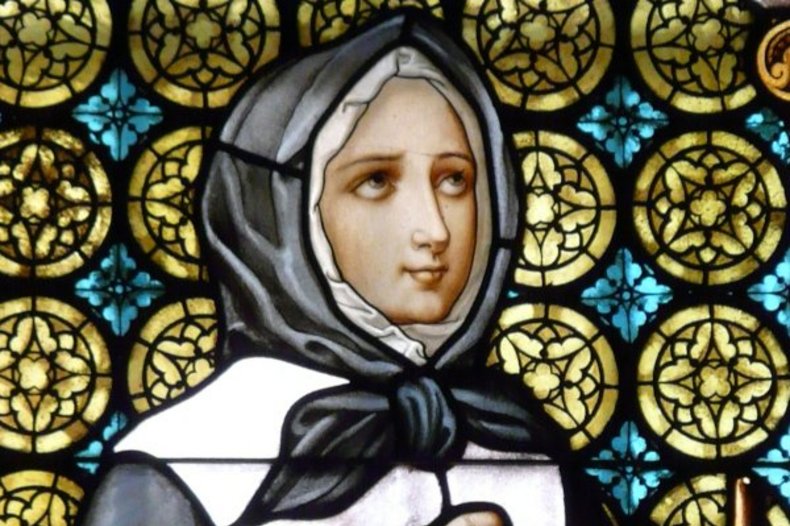
Stained glass window depicting Saint Marguerite Bourgeoys, in the church of Saint Vincent de Paul in Montreal / © CC BY-SA 4.0, ndoduc
Les raisons d'y croire :
We can see the importance of the Blessed Virgin in the life and spirituality of Marguerite Bourgeoys: Mary was at the origin of her conversion and her vocation as a nun and teacher. At the age of 20, she had a profound religious experience and conversion during a procession in honour of Our Lady of the Rosary: "I was so moved and so changed that I no longer recognised myself and, on returning home, this was noticeable to everyone.
In 1652, Marguerite was offered the chance to leave everything behind to go to New France to instruct the children of the colonists and Native Americans. It's easy to understand why Marguerite accepted such an uprooting, since the Virgin Mary had appeared to her and said, "Go, I will not abandon you".
- The work of education and evangelisation thatMarguerite Bourgeoys carried out in Ville-Marie (Montreal)was not without material difficulties or dangers, but God always showed her his presence and protection. To obtain help, she did not hesitate to cross the ocean seven times, braving all the usual hazards of seafaring in the 17th century.
- On 31 December 1699, when a young nun was at about to die, Marguerite Bourgeoys, then Mother Superior of the Congregation, asked God to take her life in exchange. The next day, the young nun recovered her health and Mother Marguerite was seized with a violent fever: she passed away to God twelve days later, on 12 January 1700.
Marguerite Bourgeoys spent her life in the service of others, and it was in Christ that she drew her energy. In her prayers, she asked God, on behalf of herself and her companions: "May we never have any other contentment than to live in you [God] and with you."
- At the time of her death, her teaching work in the New World included the foundation of eight houses offering education to 600 pupils. Her educational and apostolic work has continued ever since: in 1961, there were 262 houses throughout the world, teaching more than 100,000 students.
Lise Gauthier, aged twenty-one, was suffering from terminal cancer. While everything pointed to her imminent death (she had been given the last rites), she was completely cured in the space of one night, from 14 to 15 June 1968, after receiving relics of Marguerite Bourgeoys, while the nuns of the motherhouse of the congregation founded by Marguerite in Montreal had been asked to pray for her recovery. Lise's surgeon declared: "Something extraordinary has happened which is beyond medicine, and it wasn't me who did it." This sudden and unexpected change in Lise's health was attributed to the supernatural intervention of Mother Marguerite Bourgeoys and was recorded as the miracle that led to her canonisation on 31 October 1982.
Synthèse :
Marguerite Bourgeoys was born in Troyes on 17 April 1620 and baptised the same day in Saint-Jean church. She was the sixth of twelve children. She lost her mother when she was nineteen. Her peaceful life was transformed on 7 October 1640 by a special grace, during a procession in honour of Our Lady of the Rosary. Marguerite looked at a sculpture of the Blessed Virgin above the portal of an abbey and felt a lightness of heart and joy. She experienced what she called a "conversion". She wanted to consecrate herself to God in a religious community, but without success. This did not prevent her from taking private vows of chastity and poverty.
The young woman became an external member (sodality) of the canonesses de Saint-Augustin of the Congregation Notre-Dame. Mother Louise de Chomedey de Sainte-Marie, the head of this community, happened to be the sister of the Governor of the French settlement at Montreal in New France, Paul de Chomedey, sieur de Maisonneuve, founder of Ville-Marie, which later became Montreal. In 1652, during his trip to France, Paul de Chomedey visited his sister and invited Marguerite to join him in Ville Marie as a lay teacher to provide free education for the children of settlers and natives. Thirty-two-year-old Marguerite Bourgeoys accepted the job after the Virgin Mary appeared to her and confirmed her vocation, saying: "Go, I will not abandon you."
The teacher arrived in Montreal on 16 November 1653. The school barn, donated by Maisonneuve in 1658, had become too small. Marguerite sailed by to France to find reinforcements. When she returned to Ville-Marie in 1659, she was accompanied by four companions who formed the nucleus of a community of uncloistered women serving all the inhabitants of the colony, including Native Americans. This was an innovation at the time, when life in a cloister was the rule for nuns. They were known as the "Daughters of the Congregation". In addition to a very active life, they also led a life of prayer.
In 1670, Marguerite Bourgeoys returned to France to meet King Louis XIV, who recognised her exemplary dedication and signed the "letters patent" establishing the civil charter of the Secular Daughters of the Congregation of Notre-Dame. Canonical approval was granted in 1676 by François de Laval, the first bishop of New France. The religious constitutions of the Congregation were approved by the Church in 1698.
Marguerite Bourgeoys' daughters did not lead a cloistered life because they wanted to follow the example of Mary who had visited her cousin Elizabeth. Their profound mission was to imitate the "travelling life" of Our Lady. Dressed simply for the times, they were not dependent on anyone. They could teach catechism and teach along the banks of the St Lawrence, whether on foot, on horseback or in a canoe. They recognised Mary as their mother and protector, reciting the rosary and thanking God for the favours he had granted them. They also attached great importance to Eucharistic adoration, adoring Jesus present in the tabernacle of their community chapel. Marguerite Bourgeoys' religious name was Sister Marguerite of the Blessed Sacrament.
The Secular Daughters of the Congregation of Notre-Dame opened missions and schools for the daughters of settlers far from Montreal, such as Champlain, Batiscan and Île d'Orléans. The foundress did not hesitate to cross the ocean several times to secure material support and recruit new sisters. Her devotion to Mary and her love of the Eucharist gave her the strength she needed to continue her mission of evangelisation.
In 1693, she gave up her position as superior of the congregation to Marie Barbier, the first Montrealer to join her in 1678. She spent her last years in the infirmary, taking care to safeguard the non-cloistered " travelling life" of her congregation despite the objections of Bishop de Saint-Vallier, Laval's successor in Quebec. But everything was settled on 1 July 1698. The sisters took their simple vows in the presence of the bishop.
Marguerite Bourgeoys wrote little, leaving an autobiography and a spiritual testament in 1698. She showed that prayer "must begin from the heart, which is its centre". Her whole life was dedicated to God. She died on 12 January 1700, and the sisters of the congregation she founded continue her work as educators to this day.
Marguerite had said: "It is true that all that I have ever most desired, and that I still most fervently wish, is that the great precept of the love of God above all things and of one's neighbour as oneself be engraved in all hearts."
Jacques Gauthier, an author and theologian, has written over eighty books, including some fifty on spirituality. This article is partly taken from his blog.
Au-delà des raisons d'y croire :
Marguerite Bourgeoys was canonised in 1982. In his homily, John Paul II summed up her ardent faith well: "Saint Marguerite Bourgeoys will be remembered above all for her original contribution to the promotion of families, children, future spouses and parents. In Montreal, she was known as the 'mother of the colony'. Like Saint Paul, she could have said: "With you, we were full of gentleness, like a mother who surrounds her infants with care. With such affection for you, we would like to give you not only the Gospel of God, but everything we are."
Aller plus loin :
The Life Of Venerable Marguerite Bourgeoys: Foundress Of The Congregation De Notre Dame Of Montreal by Archbishop John Gregory Murray D.D, Kessinger Publishing (September 10, 2010)
En savoir plus :Marguerite Bourgeoys and Montreal, 1640-1665(McGill-Queen’s Studies in the Hist of Re) (Volume 27) by Sr. Patricia Simpson, McGill-Queen's University Press (April 15, 1997)
Marguerite Bourgeoys And the Congregation of Notre Dame, 1665-1700 (McGill-Queen's Studies in the History of Religion) (Volume 42) by Patricia Simpson, McGill-Queen's University Press; Annotated edition (December 12, 2005)
Marguerite Bourgeoys, Pioneer Teacher by Sister Saint Mary Genevieve, Hassell Street Press (September 9, 2021)
Marguerite Bourgeoys: brave beginnings by Patricia Simpson, EFIDES (January 1, 1900)
- Marguerite Bourgeoys historical site: https://margueritebourgeoys.org.
Marguerite Bourgeoys and Montreal, 1640-1665(McGill-Queen’s Studies in the Hist of Re) (Volume 27) by Sr. Patricia Simpson, McGill-Queen's University Press (April 15, 1997)
Marguerite Bourgeoys And the Congregation of Notre Dame, 1665-1700 (McGill-Queen's Studies in the History of Religion) (Volume 42) by Patricia Simpson, McGill-Queen's University Press; Annotated edition (December 12, 2005)
Marguerite Bourgeoys, Pioneer Teacher by Sister Saint Mary Genevieve, Hassell Street Press (September 9, 2021)
Marguerite Bourgeoys: brave beginnings by Patricia Simpson, EFIDES (January 1, 1900)









